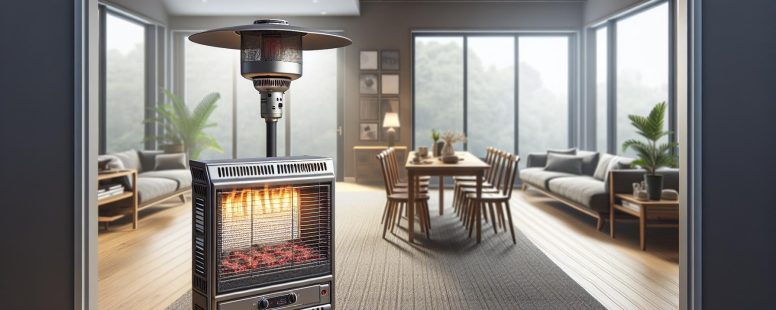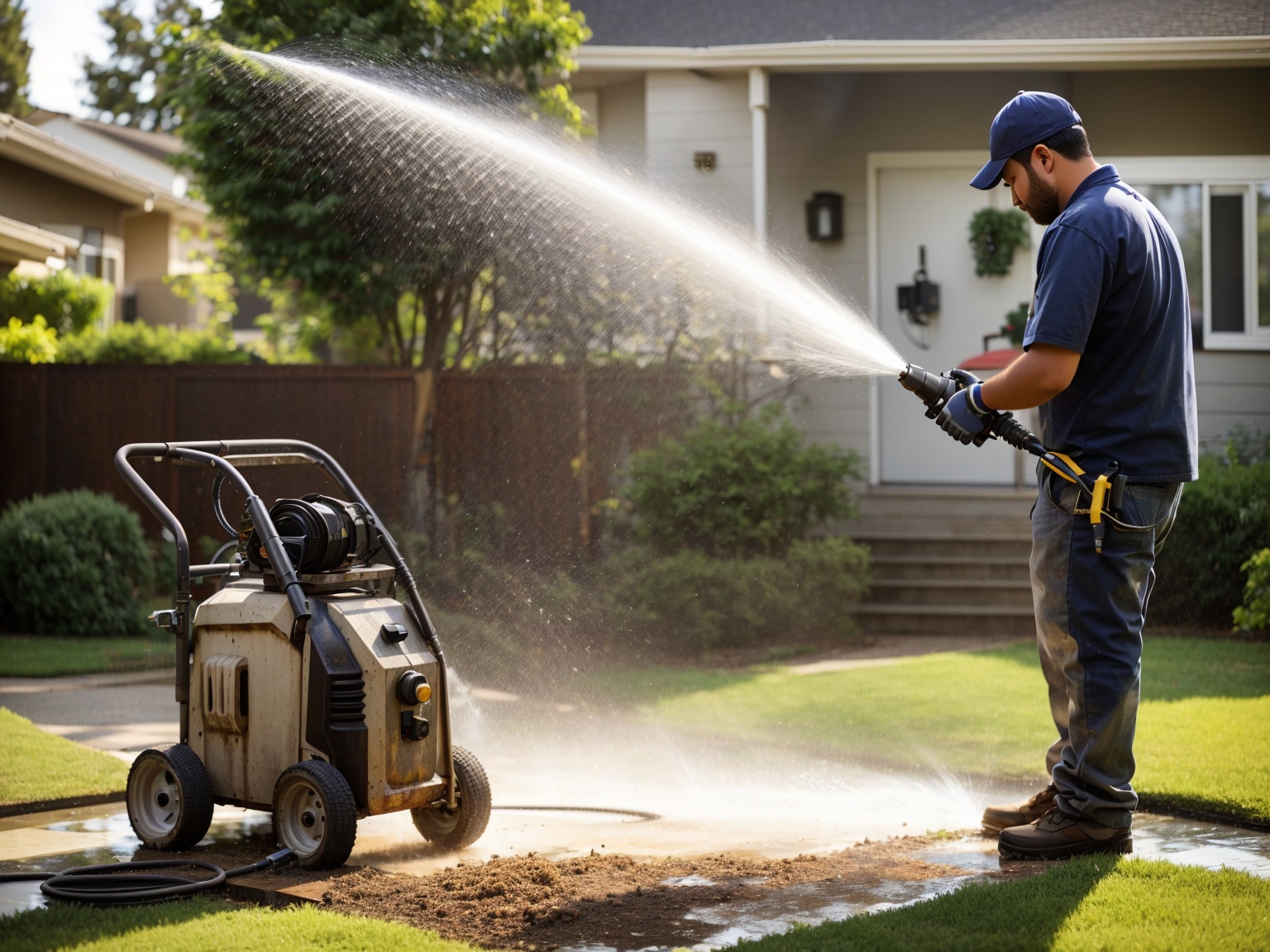Can You Use a Patio Heater Indoors? Risks and Safety Guidelines
Bringing the warmth of your outdoor oasis inside might seem like a cozy idea as temperatures dip. You’re eyeing your patio heater, wondering if it can double as an indoor companion. But before you make the move, it’s crucial to understand the risks and considerations. Patio heaters are designed for outdoor use, equipped to handle larger, open spaces. Indoor environments pose a different set of challenges and safety concerns. Let’s jump into what you need to know before deciding to bring your patio heater indoors.
Can You Use a Patio Heater Indoors?
When the temperature drops, it’s tempting to bring the warmth of your outdoor spaces inside. But, using a patio heater indoors poses significant risks and challenges you need to be aware of.
Firstly, patio heaters are designed for outdoor use, primarily because of the ventilation needs. These heaters produce carbon monoxide (CO) during operation, a colorless, odorless gas that can be fatal in high concentrations. Homes typically lack the open-air ventilation of your backyard, increasing the risk of CO buildup when a patio heater is used indoors.
Also, the risk of fire is significantly higher indoors. Patio heaters produce a large amount of heat, and if placed too close to flammable materials, such as curtains, furniture, or even walls, they can cause fires. The design specifications of patio heaters do not account for the confined spaces and varied materials found inside a home, making them unsuitable and unsafe for indoor use.
Also, the manufacturer’s instructions and warnings included with your patio heater likely explicitly prohibit indoor use. Ignoring these warnings not only poses safety risks but also voids warranties and could affect home insurance coverage if an accident or damage.
In terms of alternatives, consider safer indoor heating solutions like electric space heaters, which are designed with indoor safety standards in mind. These heaters come equipped with safety features such as automatic shutoff in case of tipping and overheating protection, making them a safer choice for heating indoor spaces.
Before deciding to bring any outdoor heating element inside, check local regulations and safety guidelines. Many areas have specific codes and rules about indoor heating solutions, designed to protect residents from the risks associated with improper heater use.
Understanding the Risks and Considerations
When contemplating whether to use a patio heater indoors, it’s crucial to recognize the inherent risks and considerations. These factors are not just guidelines but safeguards that protect your well-being and that of those around you.
Ventilation is Key
Firstly, adequate ventilation is non-negotiable. Patio heaters are designed for open spaces where air circulates freely, significantly reducing the risk of carbon monoxide poisoning. Indoor environments typically lack this natural airflow, trapping harmful gases inside. This is why an outdoor heater in an enclosed space is a recipe for disaster.
Carbon Monoxide Buildup
Carbon monoxide (CO) is a colorless, odorless gas that can be deadly. Patio heaters, especially those fueled by propane or natural gas, emit CO as a byproduct of combustion. Without proper ventilation, CO levels can quickly reach dangerous levels. Symptoms of CO poisoning include headache, dizziness, weakness, nausea, vomiting, chest pain, and confusion. In severe cases, it can lead to unconsciousness or death. Always prioritize safety and consider safer alternatives for heating indoor spaces.
Fire Hazards
Another serious concern is the increased risk of fires. Patio heaters produce a significant amount of heat, and if placed too close to combustible materials such as curtains, furniture, or even walls, they can easily ignite a fire. The design of these heaters does not account for the closer confines and varied materials found indoors, posing a substantial fire risk.
Legal and Insurance Implications
Before even considering bringing a patio heater indoors, you’re advised to check local regulations and your insurance policy. Many regions have strict guidelines against using outdoor heating elements inside due to the risks mentioned above. Also, using a patio heater indoors might void your insurance policy, leaving you without coverage in case of damage or injury.
Manufacturer’s Instructions
Patio heater manufacturers explicitly warn against indoor use in their product guidelines. Disregarding these instructions not only poses safety risks but could also invalidate warranties and leave you liable for any resulting damages or injuries.
Before making any decisions, weigh the risks and consider safer, more appropriate alternatives for indoor heating. The safety of your household should always come first.
Design for Outdoor Use
When considering whether you can use a patio heater indoors, it’s essential to understand that these devices are specifically designed for outdoor use. Manufacturers build patio heaters with the outdoor environment in mind, prioritizing features that ensure their efficiency and safety in open spaces.
Ventilation Requirements: Patio heaters require a lot of fresh air to operate safely. They burn fuel—typically propane, natural gas, or electricity—to generate heat, and this process can produce harmful byproducts like carbon monoxide (CO) if not properly ventilated. Outdoors, the open environment naturally dissipates these gases, but indoors, without adequate ventilation, they can accumulate and pose serious health risks.
Heat Output: Patio heaters are engineered to produce a high level of heat to warm expansive outdoor areas. They are much more powerful than indoor heaters, generating anywhere from 10,000 to 50,000 BTUs (British Thermal Units) of heat. This intense heat output, suitable for the open air, can make them dangerously hot and increase the risk of fire when used in confined indoor spaces.
Safety Features: Many outdoor heaters come with safety features like automatic shut-off mechanisms in case they tip over. But, these features are designed with the unpredictability of outdoor elements in mind and may not be sufficient for indoor use, where different hazards exist.
Legal and Insurance Implications: Utilizing a patio heater indoors can also have legal and insurance consequences. Many locales have regulations that strictly prohibit the use of outdoor heating appliances indoors. Also, doing so can invalidate your home insurance policy, leaving you uncovered in case of damage or injury.
By understanding these key points about the design and intended use of patio heaters, you’re better equipped to make informed decisions about heating your space safely and efficiently.
Challenges and Safety Concerns Indoors
When considering using a patio heater indoors, you’re faced with several challenges and safety concerns that cannot be overlooked. Patio heaters are designed for outdoor use, not just for their size and heat distribution but also due to the hazards they pose when used in enclosed spaces.
Carbon Monoxide Poisoning
First and foremost, patio heaters emit carbon monoxide (CO), a colorless, odorless gas that can be lethal in high concentrations. Indoors, where ventilation is limited compared to open outdoor spaces, CO levels can quickly escalate to dangerous levels. It’s not just about feeling dizzy or nauseous; high levels of carbon monoxide can lead to unconsciousness or even death.
Fire Hazards
Another significant risk is the fire hazard associated with bringing a high-heat source indoors. Patio heaters are designed to radiate substantial amounts of heat. Indoors, this heat can easily ignite flammable materials like curtains, furniture, and carpets that are in close proximity. It’s not a risk worth taking, as the consequences could be devastating.
Space and Ventilation
The very design of patio heaters also presents a challenge. They’re tall, often requiring clearance above them that most indoor settings can’t accommodate without risking damage to ceilings or light fixtures. Also, adequate ventilation is a must to disperse heat evenly and safely, a requirement hard to meet in most indoor environments.
Legal and Insurance Implications
Bringing a patio heater indoors isn’t just a safety risk; it also carries legal and insurance implications. Many regions have clear guidelines and regulations against the use of outdoor heaters indoors, not to mention that doing so can void your insurance policy. Ignoring these rules could leave you liable if an accident or fire, a cost far outweighing any perceived benefits of indoor patio heater use.
Understanding these challenges and safety concerns is crucial if you’re considering an indoor heating solution. It’s essential to weigh the risks against the benefits, always prioritizing the safety of yourself and those around you.
What You Need to Know Before Bringing Your Patio Heater Indoors
When considering the use of a patio heater indoors, it’s crucial to recognize the potential risks and take necessary precautions. Your safety, and that of those around you, should always come first. Here are vital points to keep in mind.
Understand Ventilation Requirements
Indoor spaces lack the natural airflow found outdoors, making ventilation a top concern. Proper ventilation is non-negotiable when using a patio heater inside. Ensure your indoor space is equipped with adequate ventilation systems to prevent the build-up of carbon monoxide (CO). Even a small amount of CO can have harmful effects on health, making this step indispensable.
Assess the Space
Space constraints play a paramount role in indoor safety concerning patio heaters. Clearances around the heater are essential to mitigate fire risks. Furniture, curtains, and other combustible materials need to be a safe distance away, typically recommended by the manufacturer. Check these specifications closely to prevent accidents.
Legal and Insurance Implications
Before moving your patio heater indoors, you’re advised to review local bylaws and insurance policies. Many areas have strict regulations against the use of outdoor heating appliances indoors, which could lead to fines or legal issues. Similarly, using a patio heater inside may void your home insurance policy, leaving you uncovered in case of damage or accidents. Awareness and compliance with these rules are imperative.
Manufacturer’s Guidelines
Finally, adhering to the manufacturer’s guidelines is crucial for safe operation. These instructions are designed to optimize the heater’s performance while minimizing risks. Disregarding this guidance not only endangers safety but may also invalidate warranties. Always read and follow these directions carefully.
By acknowledging these considerations, you can make a more well-informed choice about heating your indoor spaces. Remember, safety should always be your priority.
Conclusion
Exploring the decision to use a patio heater indoors requires careful consideration of the risks involved. It’s essential to prioritize safety by ensuring adequate ventilation and being mindful of the potential fire hazards. Always remember to consult local regulations and your insurance policy to avoid any legal or financial repercussions. Adhering to the manufacturer’s instructions isn’t just a suggestion—it’s a necessity for safe operation. By taking these steps, you’re not only safeguarding your well-being but also ensuring a warm and inviting space for everyone. Make informed choices and stay warm responsibly.




